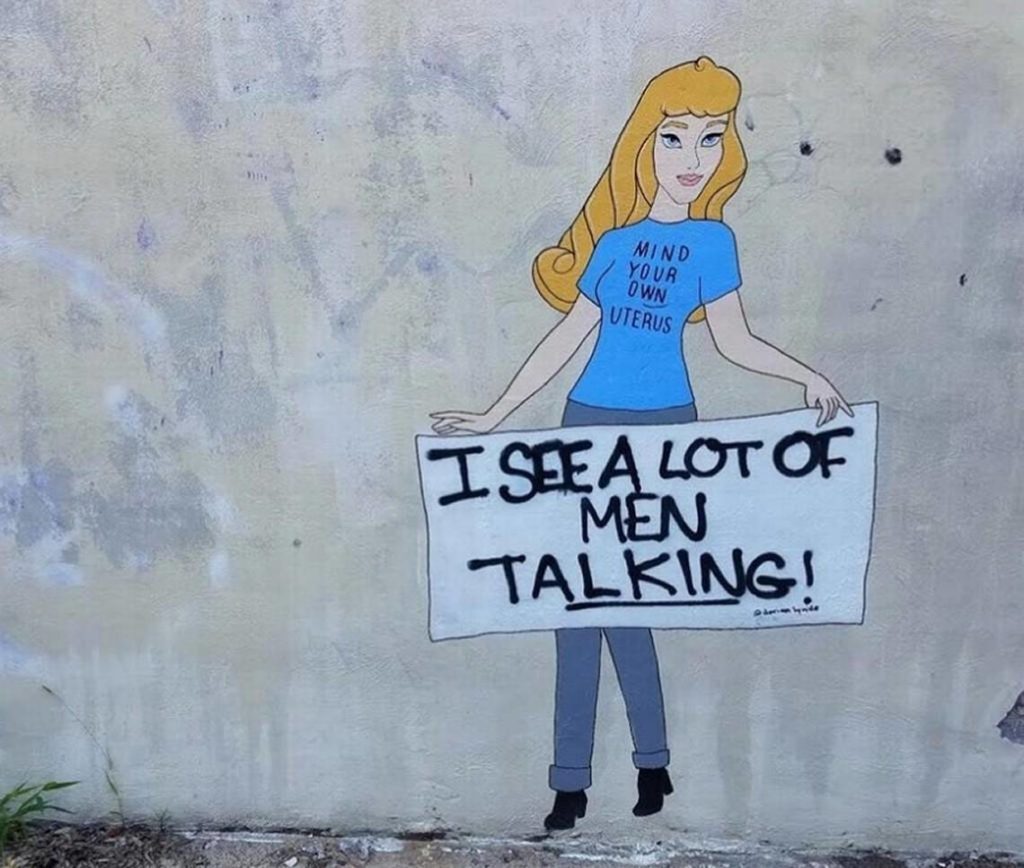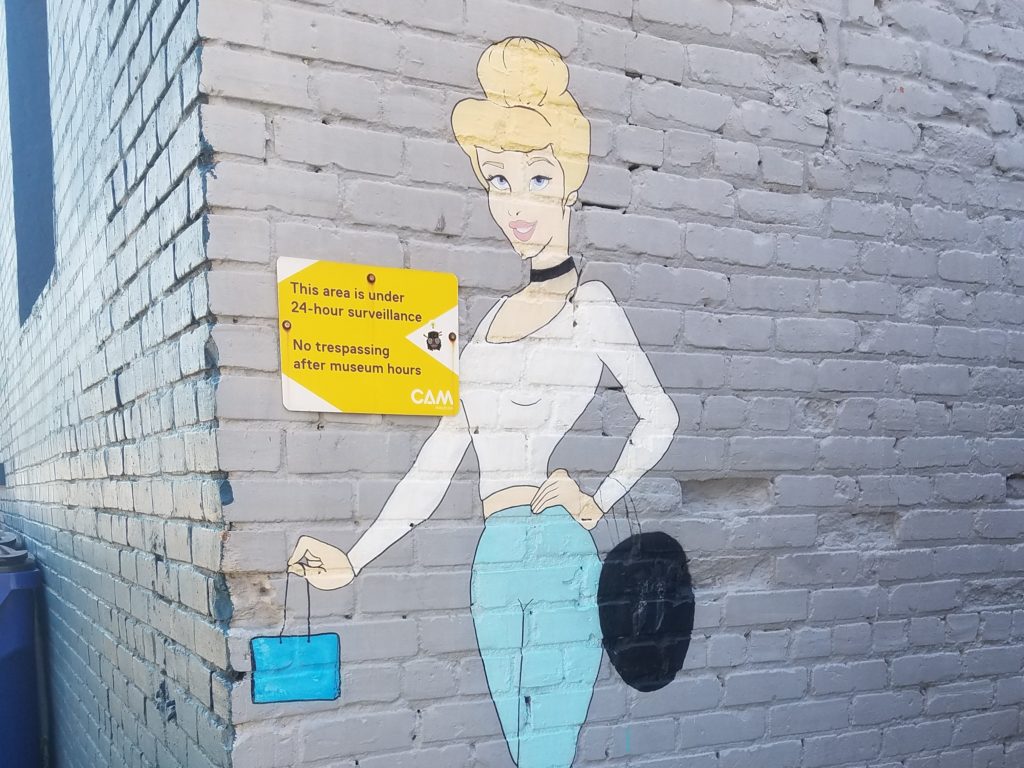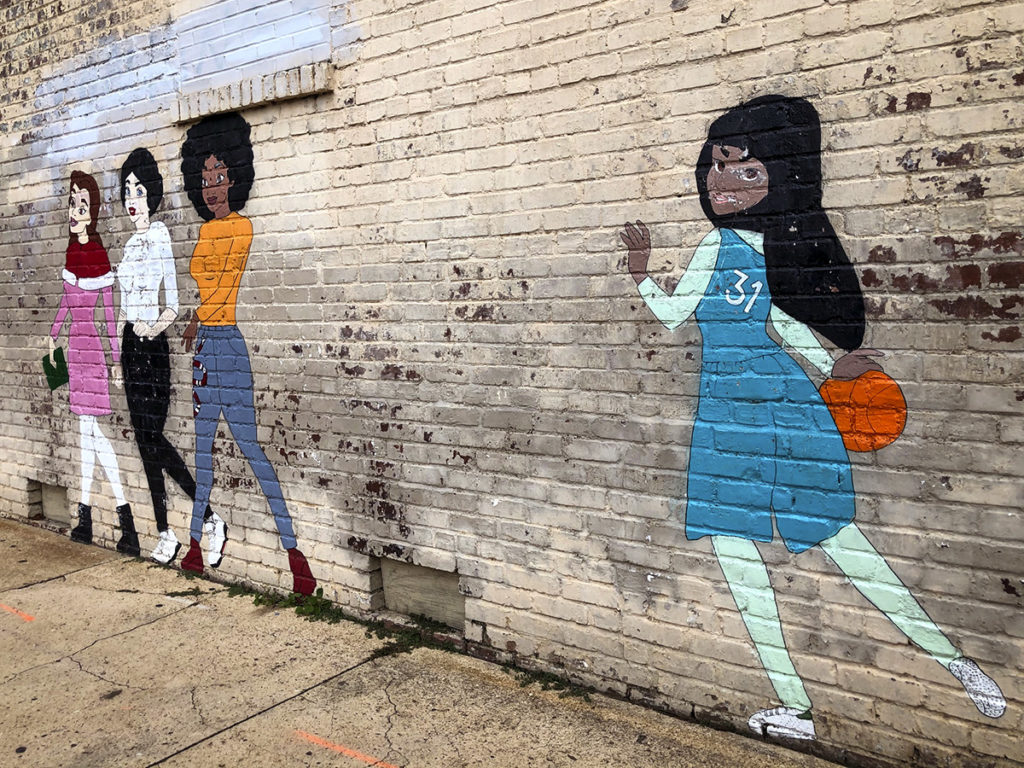Dorian Lynde
Dorian Lynde is a Canadian artist who lives and works in Los Angeles, California. Her work is most often centered around investigations into the systems of power and inequity concealed within the cultural signifiers of femininity. Her work “No Damsel” is in downtown Raleigh near the art museum CAM. “No Damsel” is a series that reimagines princesses and places them into a modern environment.
I was inspired to create the series No Damsel after learning about the history of women’s contribution to animation, and how it had been overlooked.
Dorian Lynde
Walt Disney Studio’s company policy used to bar women from having any jobs that creatively contributed to the films; they could not be animators, writers, or anything else that shaped the movie and its ideas. The only role available to them, other than secretary work, was
in the Ink and Paint department where they traced and colored the films by hand. Every Disney movie prior to The Little Mermaid was hand-painted, almost entirely by women.
“I wanted to explore how these characters worked to shape ideas, and how those ideas could be changed,” wrote Lynde via email.

“No Damsel”
(Photo courtesy of Marie Cox)
“No Damsel”
(Photo courtesy of Marie Cox)
“No Damsel”
(Photo courtesy of Marie Cox)
With “No Damsel”, Lynde wanted to call attention to the marginalization of women’s labor and the damaging portrayals of women in Disney princess movies by altering them in different ways. With all her work, she strives to engage people to ask questions and grow their understanding in some way.
“The message varies from piece to piece, but it is usually based around the many different types of images and ideas that have been strategically used towards capitalist power and social control, and how they should be examined and resisted,” wrote Lynde.
Lynde and street art have a long history, stretching back before “No Damsel” was in Raleigh. “I’ve been making art in the street since I was a teenager,” Lynde wrote. The medium spoke to her because it’s a great way to influence a wide audience.
Beyond reaching multiple people with a message, street art appealed because of its benefits to the community. Lynde believes that showing creativity in every community is critical. Specifically, displaying a community’s creativity in an accessible way. “It’s important to show art that exists in a non-institutional setting that is free from barriers of access,” wrote Lynde.